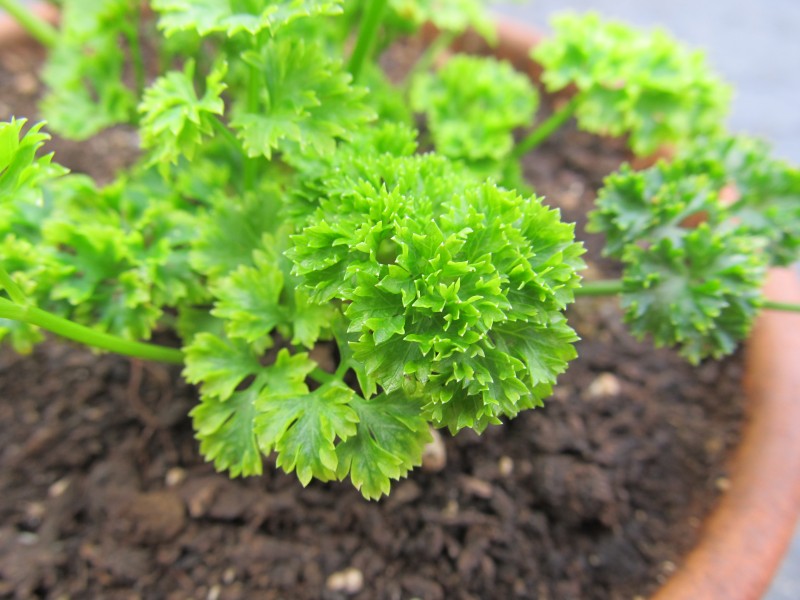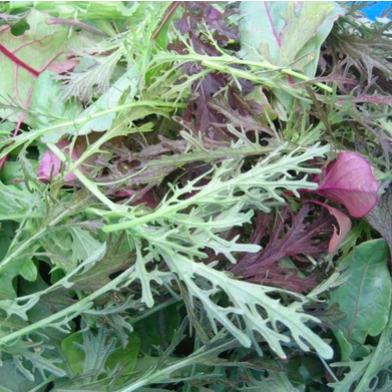September has arrived. For a Northeastern garden, that means less than two months till our first frost, and shorter and colder days and an undeniable countdown to winter. One way to count down the slowing down of growth and daylight is to keep on sowing. Although it’s too late to plant most vegetable seeds, there are a few fearless edibles that march into the cold month with hardiness and flavor. Other varieties will put up with the cooling days if we just give them a little extra comfort – like a row cover jacket. And others still should be planted in autumn and will take the winter to acclimate, set root, and make their full-blown delicious debut as soon as the snow melts and the world is ready to grow again.
To know exactly when to plant, check the frost dates in your area (ours, in zone 6 is usually around mid October), then check the growing instructions on the seed pack, and count down from there. If the window of non-frost time is long enough, plant away with confidence! If the growing window is slightly shorter than desired, you can still plant and cross your fingers for a warm autumn, or expect to eat mini-vegetables. Do keep in mind that shorter days means less sunlight, which in turn means plants will mature slowly – add an extra 2 weeks to the “days to maturity” number to account for this.
Plant Now For Fall Plates*
 Arugula, a spicy, fast growing green that loves cooler weather. Sow it thickly, then eat the thinnings and harvest all of before it gets zapped by frost.
Arugula, a spicy, fast growing green that loves cooler weather. Sow it thickly, then eat the thinnings and harvest all of before it gets zapped by frost.
 Bok Choy also loves the cold (some varieties have been known to grow under snow in Japan). Plant it now and if the growth rate slows down to a halt before the plant matures, just pick it young, it will only be sweeter and more tender.
Bok Choy also loves the cold (some varieties have been known to grow under snow in Japan). Plant it now and if the growth rate slows down to a halt before the plant matures, just pick it young, it will only be sweeter and more tender.
 Tatsoi is another fast growing Asian Green that can be grown for harvest young within three or four weeks of planting, and reaches maturity within 2 months. The plants last well into the colder months, and can be grown all winter with protection. It's sweet, dark-green, spoon shaped leaves are delectable, and it's tender stems are delicious, especially braised with garlic and soy.
Tatsoi is another fast growing Asian Green that can be grown for harvest young within three or four weeks of planting, and reaches maturity within 2 months. The plants last well into the colder months, and can be grown all winter with protection. It's sweet, dark-green, spoon shaped leaves are delectable, and it's tender stems are delicious, especially braised with garlic and soy.
 Salad Mixes, such as Salad Savor Mix or Mesclun Mix, are intended to be eaten as baby greens and are ready for harvest within approximately three to four weeks. These mixes offer great variety in taste, and can keep you eating fresh salads into early winter.
Salad Mixes, such as Salad Savor Mix or Mesclun Mix, are intended to be eaten as baby greens and are ready for harvest within approximately three to four weeks. These mixes offer great variety in taste, and can keep you eating fresh salads into early winter.
 Radishes are one of the only roots that can still be sown in September. Plant them now for a few spicy farewell bites of fresh roots before welcoming the long storage root season. Unfortunately, it is too late to put in big fall and winter varieties like Daikon or Watermelon - stick with the little ones Easter Egg or French Breakfast.
Radishes are one of the only roots that can still be sown in September. Plant them now for a few spicy farewell bites of fresh roots before welcoming the long storage root season. Unfortunately, it is too late to put in big fall and winter varieties like Daikon or Watermelon - stick with the little ones Easter Egg or French Breakfast.
Plant for Now or Later*
 Mache is a delicate and fragrant salad green that pays no attention to the cold. At the seed farm, mache came up in March, in the snow, before any other plants even thought about leafing out. Sow now for winter harvest and keep sowing through winter for cutting in the spring.
Mache is a delicate and fragrant salad green that pays no attention to the cold. At the seed farm, mache came up in March, in the snow, before any other plants even thought about leafing out. Sow now for winter harvest and keep sowing through winter for cutting in the spring.
 Spinach, green of champions, and another cool weather fan. Sow it in early September for fall harvests, then sow again in late fall and keep under cover in winter for an early spring harvest.
Spinach, green of champions, and another cool weather fan. Sow it in early September for fall harvests, then sow again in late fall and keep under cover in winter for an early spring harvest.
 Parsley is a hardy biennial. If allowed enough time to set good roots, it will survive the winter and come back up in early spring. With row cover, it will grow later into the winter and come up even earlier in spring!
Parsley is a hardy biennial. If allowed enough time to set good roots, it will survive the winter and come back up in early spring. With row cover, it will grow later into the winter and come up even earlier in spring!
 Garlic, the quintessence of fall planting, and a great closing sowing ceremony in any cold-climate garden. Plant it in October for a strong crop in June – we have limited numbers of seed cloves for sale right now and unlimited garlic planting tips any time.
Garlic, the quintessence of fall planting, and a great closing sowing ceremony in any cold-climate garden. Plant it in October for a strong crop in June – we have limited numbers of seed cloves for sale right now and unlimited garlic planting tips any time.
 Tulips are a cherished, early spring surprise. Plant the bulbs now in the fall to be rewarded with beautiful bursts of color at the end of winter.
Tulips are a cherished, early spring surprise. Plant the bulbs now in the fall to be rewarded with beautiful bursts of color at the end of winter.
*For added insurance, cover your September sown greens with hoops and row cover. The row cover will speed growth, protect greens from frost burn and make harvesting easier once the weather turns cold. (But don't cover your garlic or bulbs with row cover!) For more season extension tips, check out our post on the topic, "Season Extension into Fall and Winter".





